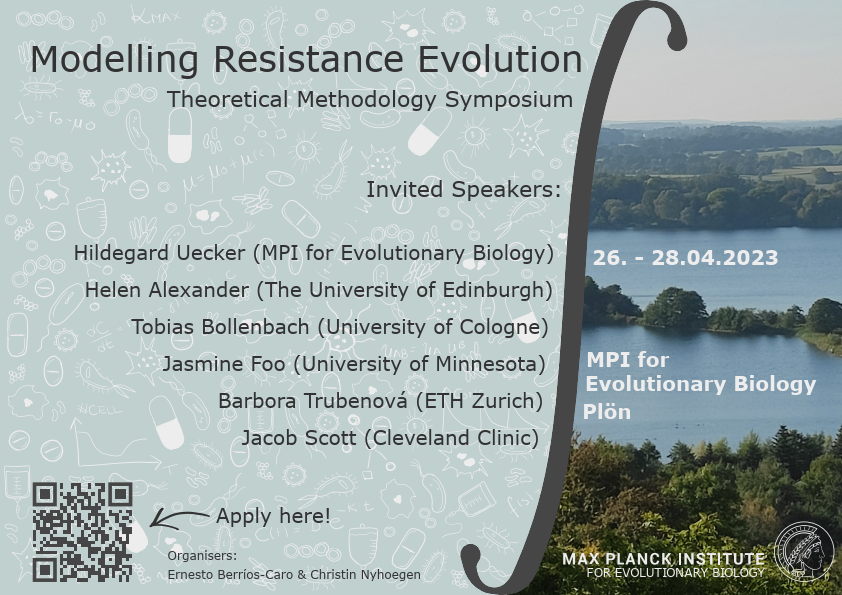Speaker
Description
Introduction Collateral sensitivity (CS) offers a strategy to counter antibiotic resistance, where resistance to one antibiotic collaterally increases the sensitivity towards another antibiotic agent. The clinical relevance and applicability of CS-based treatments remains unclear. Key factors which could determine the clinical relevance and application of CS-based treatments include: (i) heterogeneity in the collateral effects observed across resistant mutants, (ii) inter-individual variability in pharmacokinetics (PK), and (iii) the (combination) dosing schedule applied. Here, we aimed to compare the impact of CS-based clinical treatment scenarios using a mathematical pharmacokinetic-pharmacodynamic (PKPD) modeling approach, with Streptococcus pneumoniae bacteremia infections as proof-of-concept. Methods We generated resistant strains of S. pneumoniae R6 for 13 antibiotics. For each antibiotic, 10 mutant strains were selected. Antibiotic sensitivity assays were performed on all mutants to quantify collateral effects, which revealed reciprocal CS between linezolid (LNZ) and fusidic acid (FUS)-resistant strains. The pharmacodynamics (PD) of LNZ and FUS on parental and resistant strains were characterized using static time-kill assays. A mathematical PKPD modeling framework was implemented using a set of ordinary differential equations. The model included a total of 21 bacterial sub-populations, including the wildtype (LNZ and FUS-susceptible) sub-population, 10 LNZ-resistant mutant sub-populations, and 10 FUS-resistant mutant sub-populations. The model included both a stochastic component to account for mutational events leading to resistance and a deterministic component for the PK and bacterial growth/kill dynamics. The model was parametrized to reflect a condition that is expected during S. pneumoniae bacteremia cases. Simulation scenarios included the initial development of infection from a cell density of 10 colony-forming units (CFU)/mL to a cell density of 10,000 CFU/mL was reached before antibiotic treatment was initiated. This was performed to recapitulate the spontaneous emergence of resistant bacterial sub-population seen in our experiments and to represent a realistic bacterial density at start of clinical treatment. The PKPD model was used to estimate the probability of resistance establishment, which was defined as the number of times in which the sum of the resistant sub-populations was able to reach a density of at least 10,000 CFU/mL at the end of the treatment period from 1,000 replicate stochastic simulations. Result We estimated the probability of resistance establishment at the end of standard LNZ and FUS treatment over the course of 14 days for different patient groups characterized by their intrinsic differences in PK exposure to the treatment. While the standard LNZ treatment was not expected to cause resistance for a typical individual, the probability of resistance may increase to 3.6% and 98.4% in patient groups which LNZ exposure were at the lower 5.0 and 2.5 percentile. On the other hand, the standard FUS treatment was expected to consistently lead to resistance even for individuals with a higher PK exposure. Further exploratory simulations showed how a CS-based LNZ-FUS combination treatment can be used to suppress the establishment of resistant bacterial sub-population during a treatment. By accounting for toxicity limits of LNZ and FUS, future studies may use our PKPD model as a framework to develop an optimal CS-based treatment to suppress resistance, especially for patient groups with a lower exposure to LNZ and/or FUS. Conclusion This study demonstrated the utility of PKPD models to explore the potential application of a CS-based treatment to suppress the establishment of resistant bacterial sub-population(s) during an antibiotic treatment.

